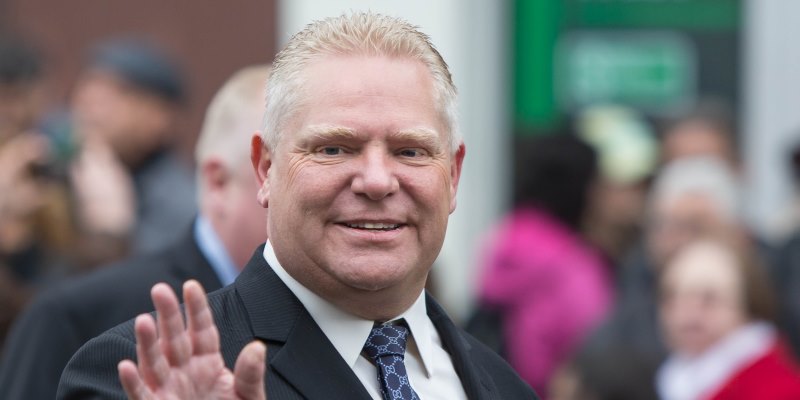Memo to Doug Ford—Ontario desperately needs personal income tax reform

Due to last week’s election victory, Doug Ford is Ontario’s premier-designate. However, now comes the difficult task of governing. While there’s no shortage of pressing policy issues for the province, tax relief should be top of mind when the Ontario PCs take office. And there’s no better place to start than by addressing Ontario’s biggest tax competitiveness issue—high and uncompetitive personal income tax rates.
A recent Fraser Institute analysis found that the average Ontario family (consisting of two or more people) will pay 43.3 per cent of its income in various federal, provincial and municipal taxes this year.
And the top combined provincial-federal tax rate in Ontario is 53.53 per cent—the second highest combined rate in Canada or the United States and one of the highest in the developed world. For every extra dollar a high-earning skilled professional earns, governments keep more than half in income tax alone.
This a major issue for Ontario, as research shows high marginal tax rates discourage productive economic activities such as work, savings, investment and entrepreneurship. In addition, a punitive top tax rate makes Ontario less-attractive to entrepreneurs and mobile skilled workers, particularly compared to neighbouring rust belt states such as Michigan where the top federal-state income tax rate is just 41.25 per cent (and kicks-in at a much higher income level).
Of course, one might wonder whether Ontario can afford to cut income tax rates. Simply put—it can.
A recent study estimated that if Ontario introduced a single 8 per cent income tax rate (with measures to ensure no lower-income residents faced tax increases), revenue would decline by $7.6 billion in 2018/19 (in the context of a $159 billion operating budget). This cost could be almost entirely offset by cancelling planned spending increases in this year’s budget.
Moreover, this estimate does not account for the fact that lower tax rates would improve economic incentives and likely spur economic growth, helping partly offset any revenue losses. Ontario’s top personal income tax rate would plummet from 53.53 per cent to 41 per cent, and go from the second highest rate in Canada and the U.S. to 12th lowest.
This is hardly a draconian suggestion, particularly when you consider that spending increased significantly last year. (With a spending freeze in 2018/19, spending this year would still be up 6 per cent in nominal terms over the past two years.)
Given the enormous competitive pressures facing Ontario, a year of spending restraint is a worthwhile price to pay for an economic shot in the arm to boost competitiveness. As one of his first orders of business, premier-designate Ford should consider a tax plan that offers major relief and improves economic incentives, enhancing competitiveness and driving growth.
Authors:
Subscribe to the Fraser Institute
Get the latest news from the Fraser Institute on the latest research studies, news and events.

